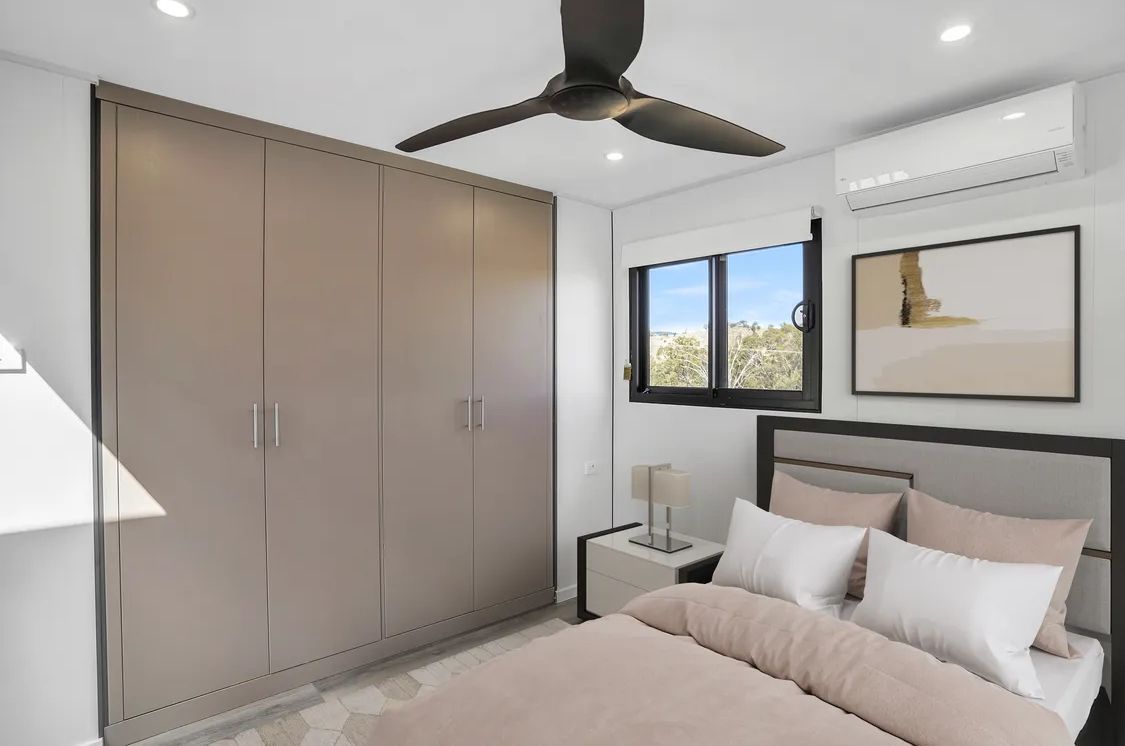Container Living That Works Long Term

Container homes are popping up all over Australia—from semi-rural blocks to coastal towns and remote escapes. Many people are drawn to the idea of a sustainable, cost-effective home that’s a bit different from the norm. But while the concept is clever, it’s not as simple as slapping a steel box down and calling it a day.
Whether you’re building from scratch or buying a finished product, your container home should be safe, well-planned and suited for long-term living. And if you want true comfort, it’s worth considering a purpose-built, wider and more spacious container design—not a tiny modified unit.
Here’s what to look out for.
1. Start With the Right Type of Home
There’s a big difference between a second-hand shipping container and a container-style home designed for residential living. Used containers may have carried chemicals, be rusted out or simply not meet local building codes.
If you’re serious about safety and comfort:
- Go for a purpose-manufactured container home—these are built new with residential standards in mind.
- Look for designs that use multiple wider modules rather than trying to cram everything into one narrow unit.
- Ask the builder or supplier about the materials used, the insulation system and whether the structure has been engineered for housing use.
It may cost more upfront, but you’ll get a more spacious, better-insulated and safer home in the long run.
2. Get Structural Advice Before Making Changes
Containers are designed for stacking and shipping, not for living. Once you start cutting into walls for windows, doors or open-plan spaces, you change how the structure behaves.
If you’re not using a pre-designed, engineered layout:
- Always talk to a structural engineer before making cuts.
- Reinforce any walls where you’re removing sections.
- Make sure load-bearing areas are supported, especially if you’re joining containers or building a second level.
Purpose-built homes usually come with all of this sorted—another reason they’re worth considering over DIY conversions.
3. Insulation is Non-Negotiable
Metal walls can turn a container into a furnace in summer and an icebox in winter. Proper insulation is essential.
What works:
- Spray foam is a popular choice—it insulates well and doubles as a moisture barrier.
- For cooler regions, rock wool or high-density rigid panels work too.* Whatever you use, the installation has to be airtight and don’t forget ventilation. Extractor fans, operable windows and roof vents make a big difference.
Larger, modular container homes often include climate control considerations from the start—especially important in Australia’s extreme weather.
4. Use a Licensed Electrician
Electrical work is one area where shortcuts are dangerous. Even for smaller homes, every outlet and switch needs to be up to standard.
A licensed sparkie will:
- Install RCDs (safety switches) and surge protection as required by law.
- Set up wiring that can handle future needs—like solar systems, air conditioning or electric hot water.
- Provide a certificate of compliance, proving the work meets AS/NZS 3000 standards.
As metropolitanelectrical.com.au explains: “This certificate is your written proof that licensed electrical workers have carried out the work in your home, in accordance with wiring rules adhered to by the electrical industry (AS/NZS3000:2007). It also indicates that the completed work has been tested and proven safe and effective.”
Even if you’re thinking of going off-grid or DIY, electrical safety isn’t something to compromise on.
5. Don’t Assume Steel Means Fireproof
While steel walls can slow the spread of flames, your internal materials—and surroundings—still need to meet fire safety standards, especially in bushfire zones.
Smart steps:
- Use BAL-rated doors and windows if required in your area.
- Keep gutters clear and vegetation trimmed around the perimeter.
- Install smoke alarms in all bedrooms and test them regularly.
Purpose-manufactured homes designed for regional areas often factor in BAL compliance from day one, which can save time and money.
6. Secure It Like Any Other Home
Cutting into a container for windows or sliding doors means thinking about security too—especially if you’re in a remote location.
Basic security upgrades:
- Fit proper deadlocks and keyed window locks.
- Consider motion-activated lighting outside.
- If you’re away often, consider keeping the original container doors on for added protection.
Wider, professionally designed homes often come with better-integrated security features—something that’s often overlooked in compact builds.
7. Build on a Solid Foundation
You can’t just drop a container on the ground and hope for the best. Moisture, shifting soil and poor drainage can all cause issues over time.
Common foundation options:
- Concrete piers: good for airflow underneath.
- Slabs: best for permanent, level setups.
- Screw piles: handy for sloped or soft ground.
Bigger container homes with open interiors often rely on more substantial foundations—make sure your site prep matches the size and design of your home.
8. Watch Out for Hidden Materials
Old containers may have been treated with pesticides and older paints may contain lead or other toxins.
If you’re converting a used container:
- Replace any suspect flooring.
- Seal or sandblast internal walls if you’re unsure of their history.
- Use low-VOC interior finishes to keep air quality healthy.
Buying new? Ask your supplier what materials are used—especially for flooring, insulation and paints.
9. Plumbing Can’t Be an Afterthought
Small water leaks in a steel frame home can cause long-term damage. Planning proper plumbing from the start is crucial.
Your plumber should:
- Waterproof wet areas to AS 3740 standards.
- Design systems that suit your site—tank, sewer or greywater.
- Ensure all waste and stormwater drains away from the home.
Larger container homes often include full kitchens, laundries and multiple bathrooms—another reason professional design is worth the investment.
10. Get Council Approvals Early
Every council has different rules for container-style homes. Even if the home is small or temporary, you’ll need permits.
Before you build:
- Check zoning rules and building codes for your area.
- Apply for the correct permits—especially for plumbing and electricity.
- Keep all certificates and plans in one place for inspections.
Working with a reputable container home company will streamline this process—they know what’s required locally.
Container Living That Works Long Term
Container homes have come a long way from basic, boxy conversions. With thought-out design, proper insulation and enough room to live comfortably, they can be a stylish and functional alternative to traditional housing.
The key? Don’t think small and temporary. Go wider. Go safer. Go with a design that’s built for real living.
If you’re considering container living, start with a purpose-manufactured, engineered layout that ticks all the boxes for space, safety and long-term durability. The more you put in upfront the better your home will feel for years to come.
👉 Next Step:
- Book a free consultation call
- Download our Container Home Cost & Compliance Checklist (PDF)
- View completed projects




